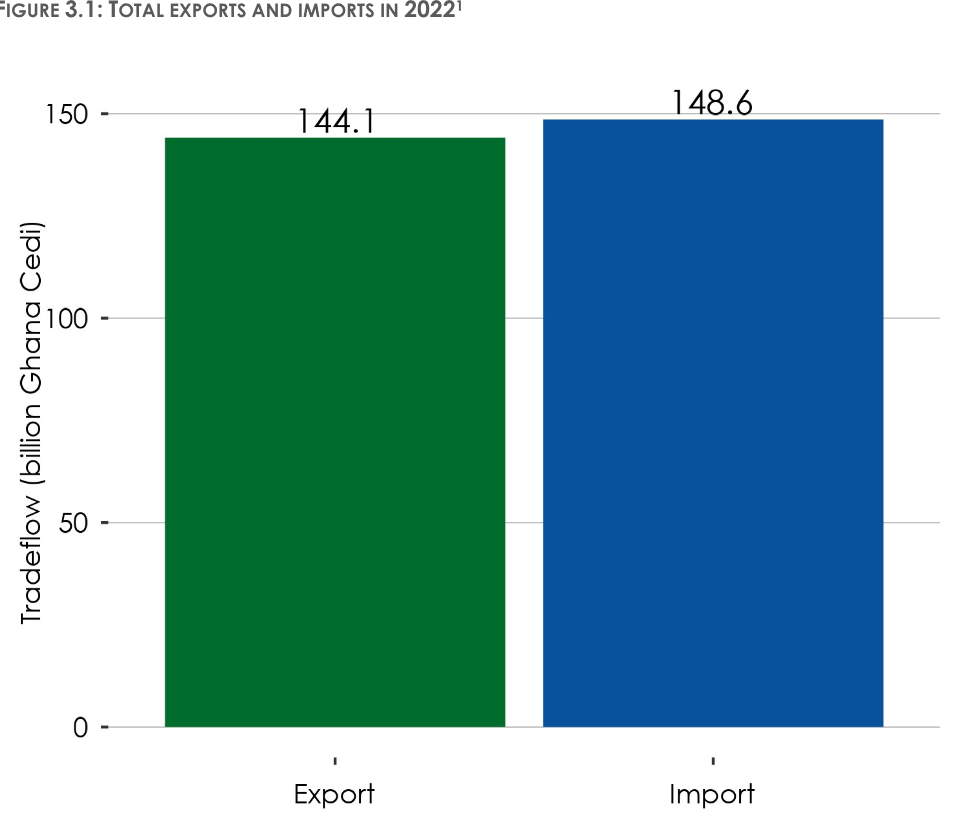According to the Ghana Statistical Service first Trade Vulnerability Report, Ghana experienced a significant trade deficit in 2022.
The data shows that the country’s imports were GH 4.5 billion higher than its exports, highlighting a serious economic problem.

The most striking contrast emerged in September, during which imports surpassed exports by over GHS4 billion.
“In nine out of the 12 months in 2022, the value of imports was higher than exports. The largest variation in the month where imports exceeded exports was recorded in September (GH₵4.5 billion).”

Furthermore, the report highlights that Ghana’s imports spanned across 209 countries, significantly contrasting with the 161 countries involved in its export activities.

The Government Statistician, Professor Samuel Kobina Annim, presented the report’s findings and stated that the data is a useful tool for stakeholders, economists, and policymakers alike, offering crucial insights to guide future strategies aimed at fostering a more stable and balanced trade environment.
According to the research, Ghana’s three largest exports—which account for more than 80 percent of total exports—are gold (37.5%), mineral fuels and oils (30.6%), and cocoa beans and products (12.4%).
More than a quarter (26.8%) of all imports are made up of mineral fuels and oils, which are followed by chemical products (10.7%) and machinery and electrical equipment (13.3%).

Ghana’s trade relations, both exports and imports, are predominantly with Europe, constituting more than a third of all exports (35.9%) and imports (39.2%). This is followed by Asia, with 28.5 percent of all exports and 37.2 percent of imports.
Source: citinews














